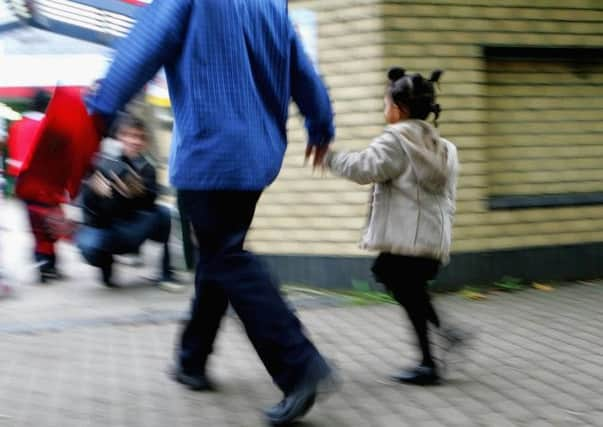Fathers figure too in adoption tracing talk


The film Philomena starring Judi Dench and Steve Coogan was a hit last year. It tells the story of a mother (played by Judi Dench) whose son was given up for adoption after she became pregnant, in an Ireland of the 1950s that was unforgiving to women who conceived out of wedlock.
The film focuses on Philomena’s search for her son which, although ultimately unsuccessful, provides some help in her coming to terms with the loss of her child.
Advertisement
Hide AdAdvertisement
Hide AdAs such, Philomena is not different from many other stories concerning birth mothers who grieve for their adopted children and are anxious to know what became of them.
Often adoption stories – and professional policy and practice – convey the impression of an immaculate conception, with no man in the picture. Hence the questions: “What of the fathers of these children?” “Do they figure anywhere else except at conception?”
When they are not written out of the picture altogether, the impression is that they were older men who got girls into trouble; feckless, fly-by-night cads and the like. The truth, as recent research and our practice tells us, is quite different.
A large majority of birth fathers of children given up for adoption were the same age as their (teenage) partners at the time, there were few fleeting encounters and many of these young men were “going steady”. Once their girlfriend had become pregnant, many tried to stay involved, but a combination of societal and parental pressures prevented that from happening.
The 1950s through to the 1970s (the peak years for the adoption of babies) were everywhere unsupportive to young unmarried men and women who had conceived a child.
At Birthlink, we do not see as many men as women enquire about how they can find out how their child has fared in life. Yet of the men that we do see, there are more similarities than differences in the way that they talk of the son or daughter that they either never saw before the adoption, or saw only once or twice, sometimes only through a hospital ward window.
For these men, out of sight has not meant out of mind and they evince the same sense of loss and curiosity and concern regarding the welfare of their child that is felt by birth mothers.
Earlier this year, a man we will call Robert came into our office and shared the following account of his experiences.
Advertisement
Hide AdAdvertisement
Hide AdRobert was a teenager and in a steady relationship in the early 1960s.
When his girlfriend became pregnant, their greatest worry was telling their parents. Her mother was opposed to the baby and decided that the child would be adopted. The birth mother was placed in a mother and baby home. Robert visited regularly and was in the building when the baby was born.
He remembers holding her and recalls that she was “quite pretty”. He felt that he had no options and was angry about the adoption of his child. He and the birth mother split up shortly after.
Within about three years, feelings about his daughter “began to grate”. After that, his feelings remained intense.
She was “just there on your brain”. Eventually, he got on with life and had other children.
When asked the common question about how many children he had, he told our worker that he would usually lie and discount his first child, but if he trusted the enquirer he would say “two plus one”.
Since Robert turned 50, his thoughts and feelings for the daughter that was adopted had became so strong he was moved to do something about it. His restlessness led him to us.
Just as services for birth mothers are sparse and there is little official means to launch a search, so too is it for birth fathers.
Advertisement
Hide AdAdvertisement
Hide AdRobert’s name is on our Adoption Contact Register in the hope that his daughter will one day register a mutual interest in contacting him, and we have traced the relevant adoption agency records and had him write a letter to be placed with them (the agency closed in the 1980s and the files are now held by a local authority social work department). These are two “marker buoys” laid down by him, with our help.
The actions of Robert and those of other birth fathers who are in the same situation as him shed light on a relatively unheard story among the many others that are created when a baby is adopted.
• Gary Clapton is a university lecturer in social work and a consultant with Birthlink, an Edinburgh-based charity with more than 100 years of experience of working with families.